Hi, I’m Amar from amarguitar.com!
In part 2, we broke down bars 5-28 of Trey Anastasio’s guitar solo.
In this lesson, we’ll break down bars 29-44 and discuss techniques that Trey A uses when improvising a solo, such as using space, addressing chord tones, and mixing major scales with modes.
A link to download a PDF of this tab is in the description.
Grab your guitar and lets dive in!
Bars 29-32

Trey starts this phrase with four quarter notes, just the root and 5th of C.
This is a subtle move, but often when a great soloist pulls back a bit in a middle of a solo, which he’s doing rhythmically here, it means that he’s about take it up a notch. Kind of like taking a breath before you sprint off a cliff and into a pond.
He plays a similar lick over the second bar of. measure 30, another similar lick over the Am chord that he’s been playing.
He holds a note E over the Barline going from the Am to the F chord, and then he superimposes a C major triad over the F Chord in the beginning of bar 32.
In F, this gives us the Major 7th, the 5th and the 9th. He then plays up the F major arpeggio in the C shape the end of the lick.
Bars 33-36

At the end of the last phrase, Trey shifted up towards 8th position (which is the 8th fret) and for the beginning of this phrase, he decides to stay here.
This whole phrase revolves around the C major scale in the E shape, you’ll see diagrams for this in the image carousel towards the end of this section.
Trey repeats this lick a couple times over the C chord in measure 33 and 34.
Notice that he lands on root – the A note when he gets to the Am chord.
He also targets the 5th of Am (E note) in the second half of bar 35 and then lands on the 5th of F to start bar 36.
Great soloists always address chord tones in their solos, like you’re seeing here.
Learn to recognize and gravitate towards chord tones in your solos, and you’ll instantly find that your lines are much more melodic and purposeful.
Trey repeats this lick a couple times over the C chord in measure 33 and 34.
Notice that he lands on root – the A note when he gets to the Am chord.
He plays around with the 5th of Am (E note) and then lands on the 5th of F.
Great soloists always address chord tones in their solos, like you’re seeing here.
Learn to recognize and gravitate towards chord tones in your solos, and you’ll instantly find that your lines are much more melodic and purposeful.
Bars 37-40

Here, we see a little bit of a temporary shift in Trey’s approach.
Up until now, he has been really focused on creating interesting rhythms and nailing the chord tones of our C – Am – F chord progression.
Over the C, he still does that by playing out of the G shape of our C major scale.
But over the Am and F chord, he opts to focus on a C mixolydian sound. Let’s check out C mixolydian in the E shape:
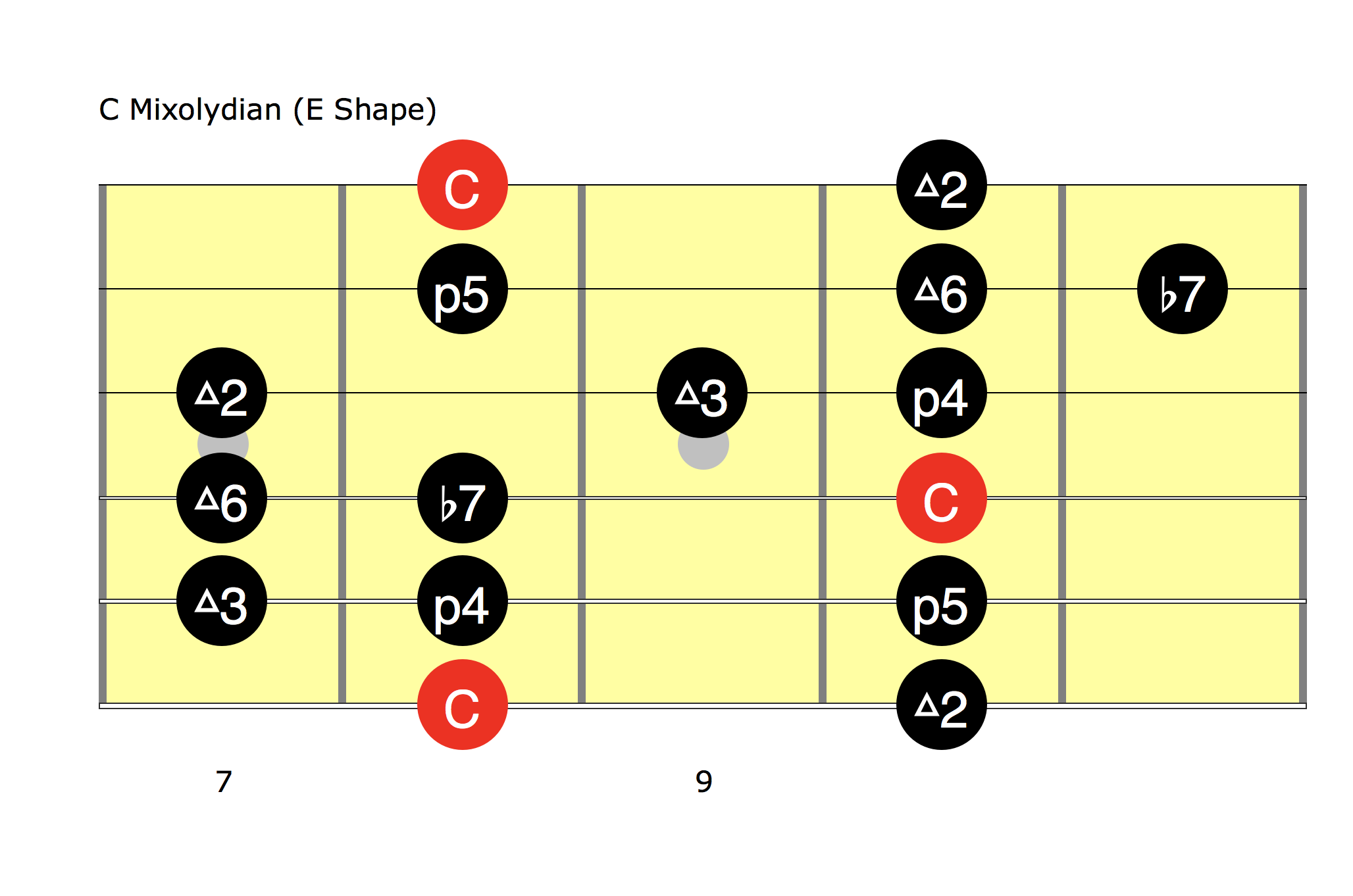

Now this whole time we’ve been talking about harmony, we’ve been discussing the C Am F progression.
Let’s not forget that we’re in a Bathtub Gin jam and we started in a C mixolydian-based harmony.
It sounds like that’s what Trey wants to allude to, and we do switch back to C mixolydian down the line a little bit later.
The band will often will do a push pull with harmony, where some members will start drifting or hinting towards one sound, either just to throw out an idea (like trey’s doing here) or to signal that they want to take the jam in that direction.
Bars 41-44

This four bar phrase is really a springboard for bars 45-48, which is the iconic peak of the Went gin.
Over the C chord, Trey focus on the root and throughout this phrase he’s focusing more and more on 16th note rhythms, which really jacks up the rhythmic tension.
He’s back to stressing the Am sound over the C chord bar 42.
And over bars 43 and 44, he plays almost the same phrase for each bar, mainly stressing the notes C and E.
This lick sounds great because over the Am chord, C is the minor 3rd and E is the 5th.
Over the F chord, C is the 5th and E is the Major 7th, giving it that beautiful, yet light tension.
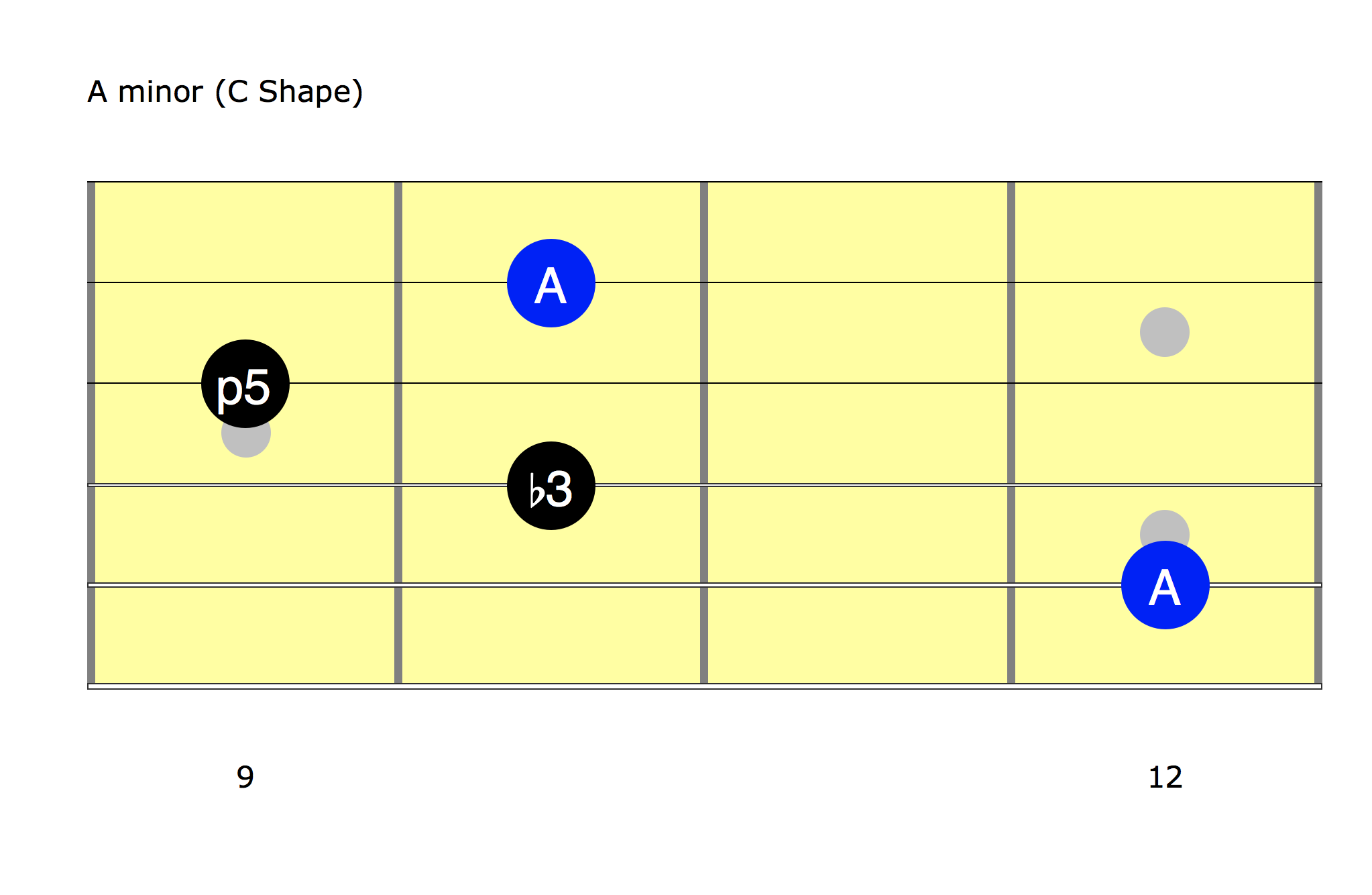
In the next part of this series, we’ll see how Trey improvises static melodies that magically work over several moving chords, as well as techniques such as using the major pentatonic to address both mixolydian and major scale harmonies.
If there’s an idea that you found confusing or inspiring, let me know in the comments. I’ll see you guys in part 4!
Full PDF of Trey Anastasio’s Guitar Part for Bathtub Gin
- Desktop users: hover over the page with your mouse to reveal the up/down buttons
- Scroll below if you want the PDF sent directly to your email inbox


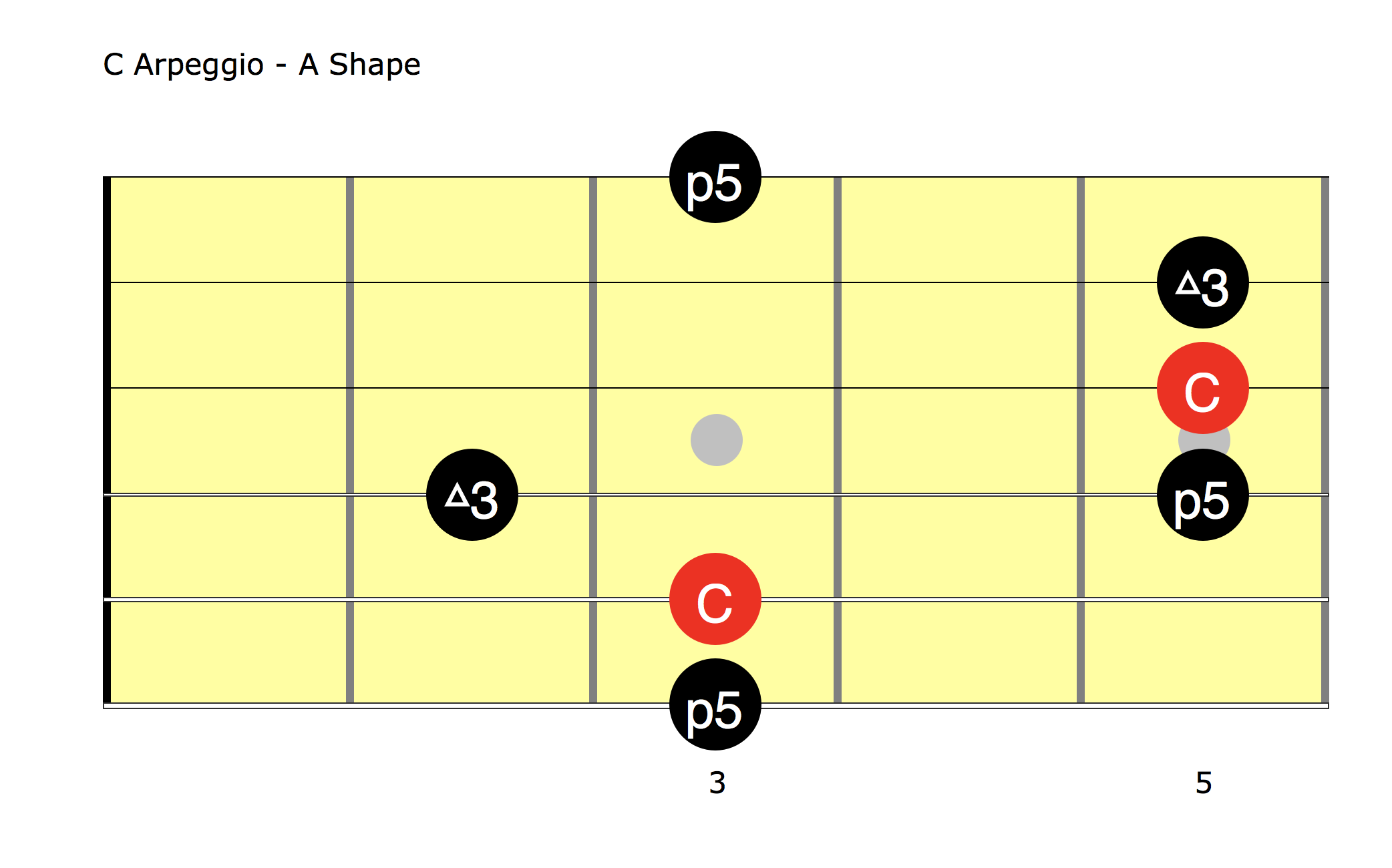
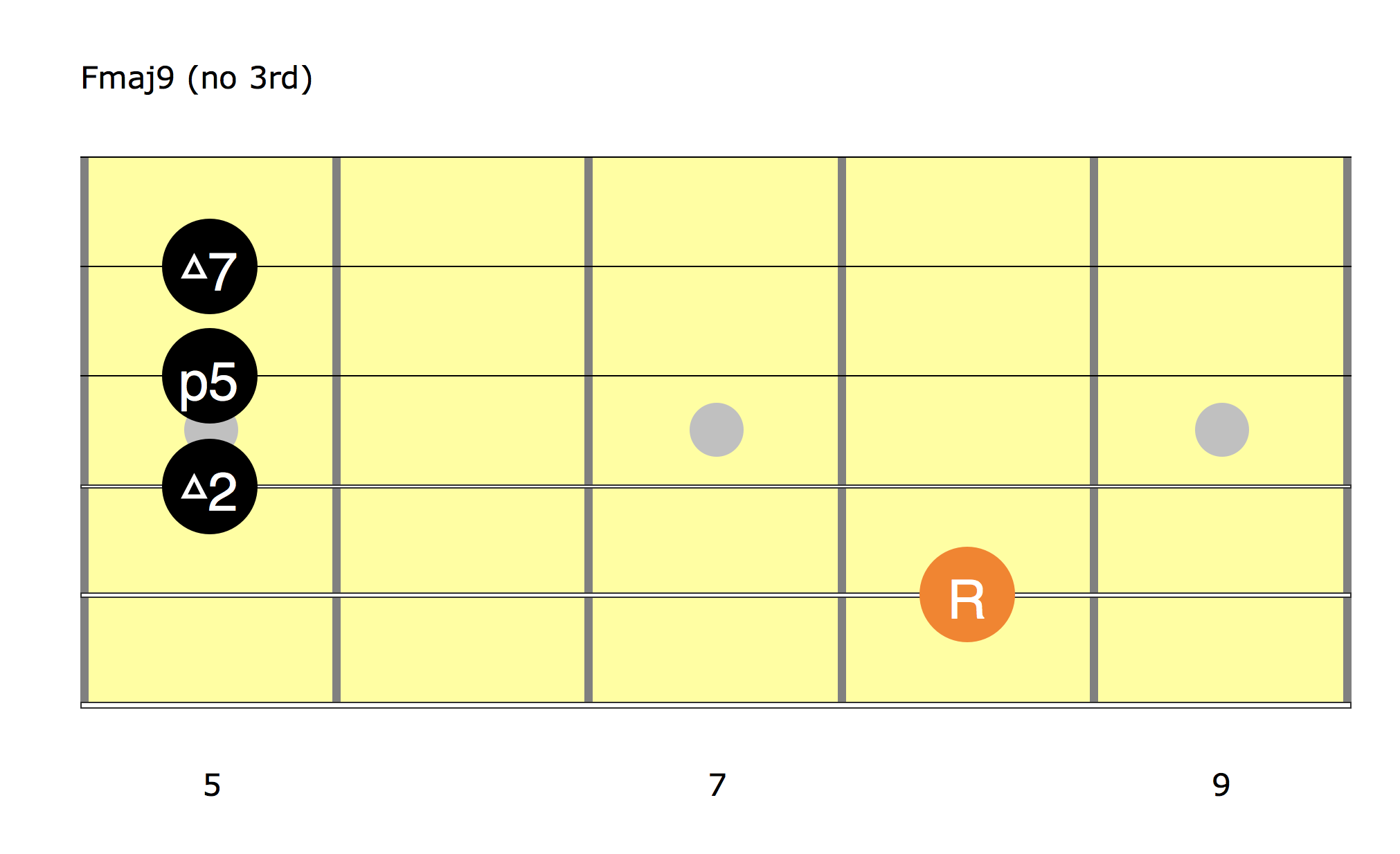
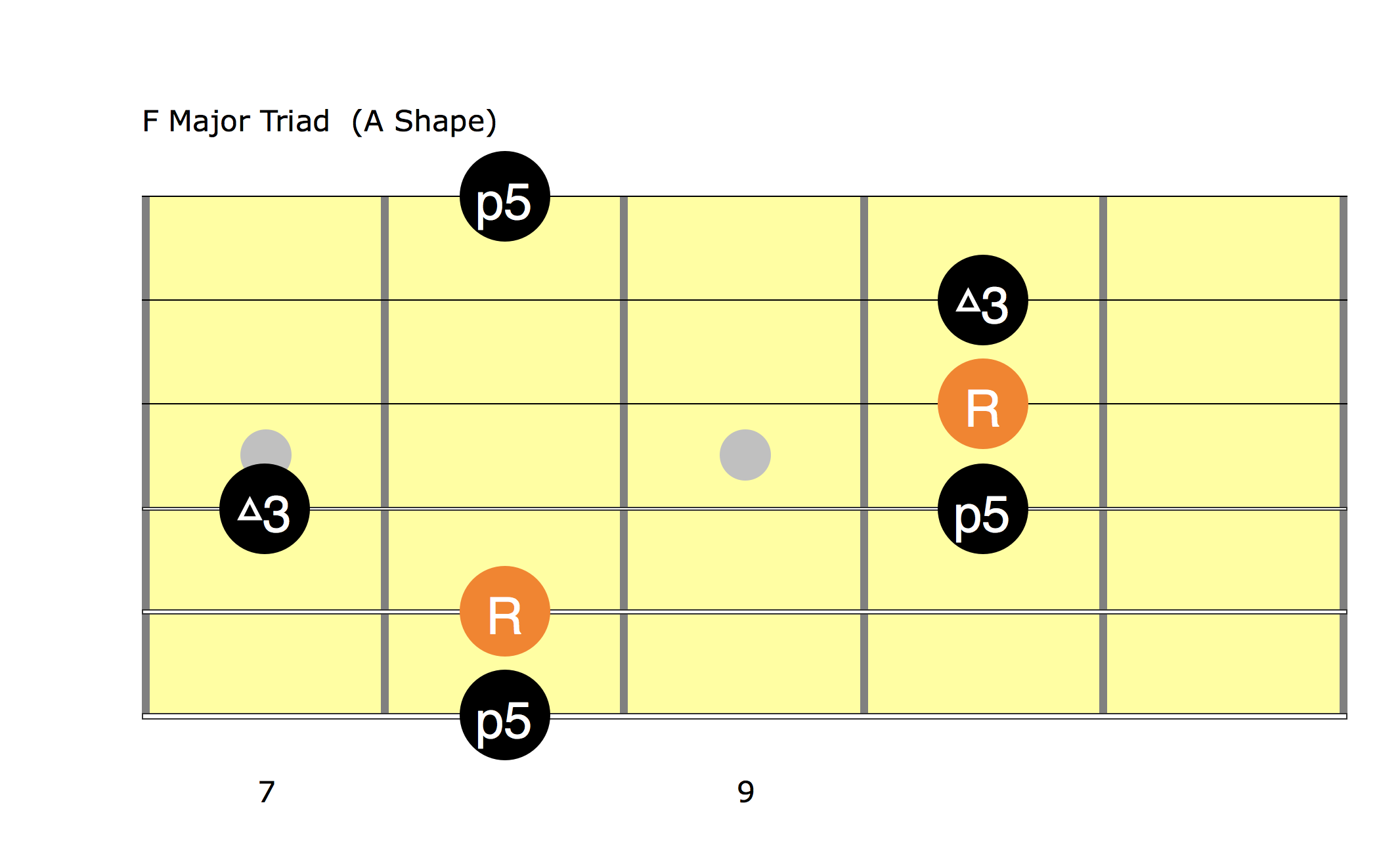
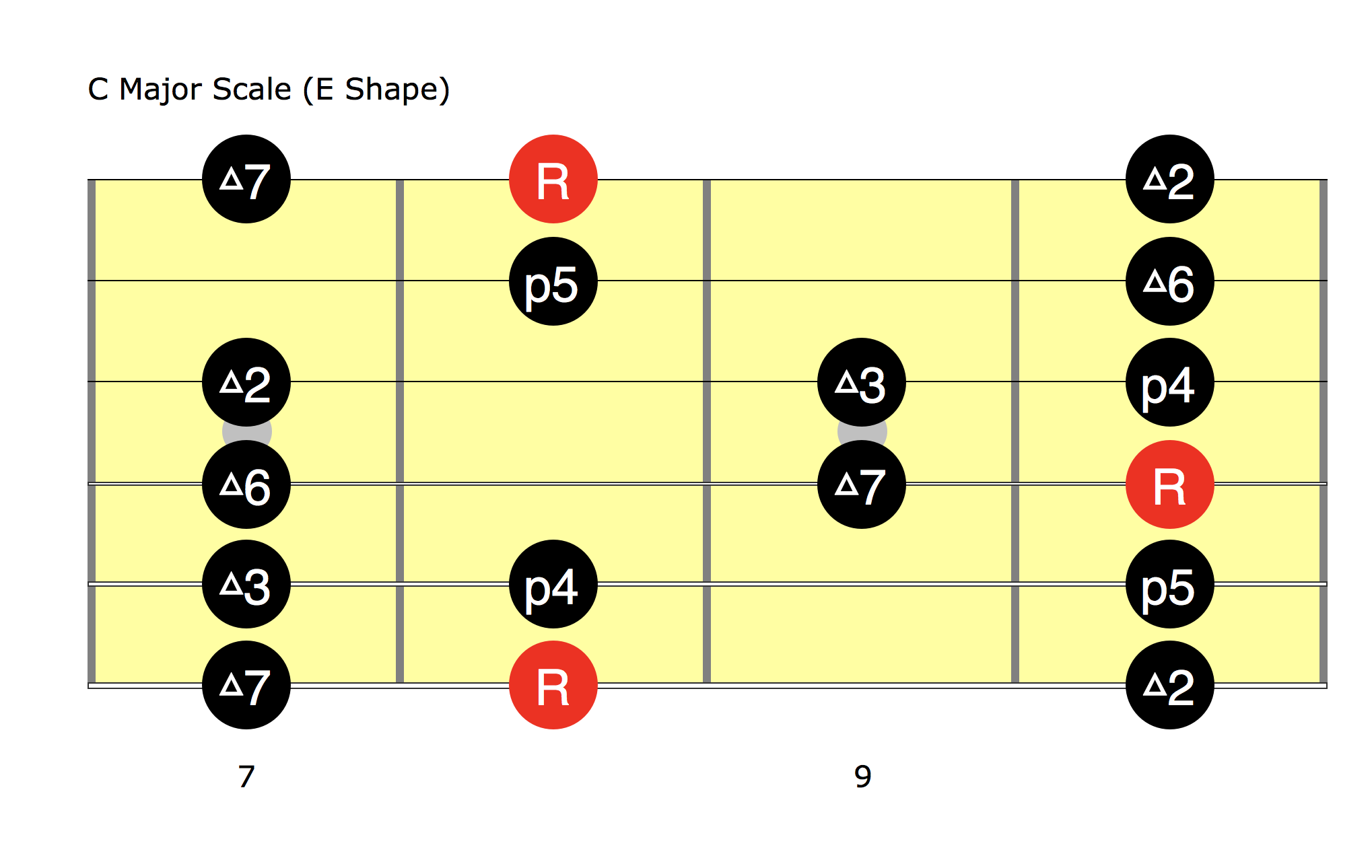


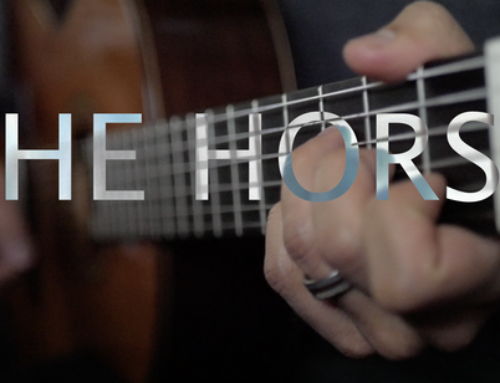

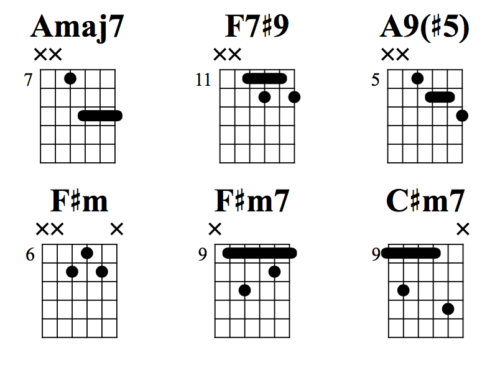

Leave A Comment